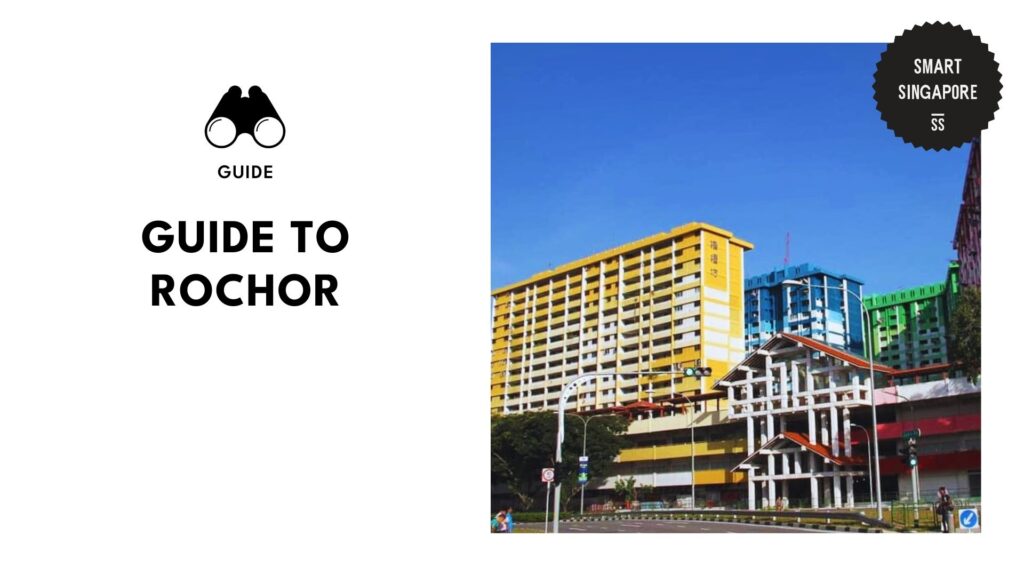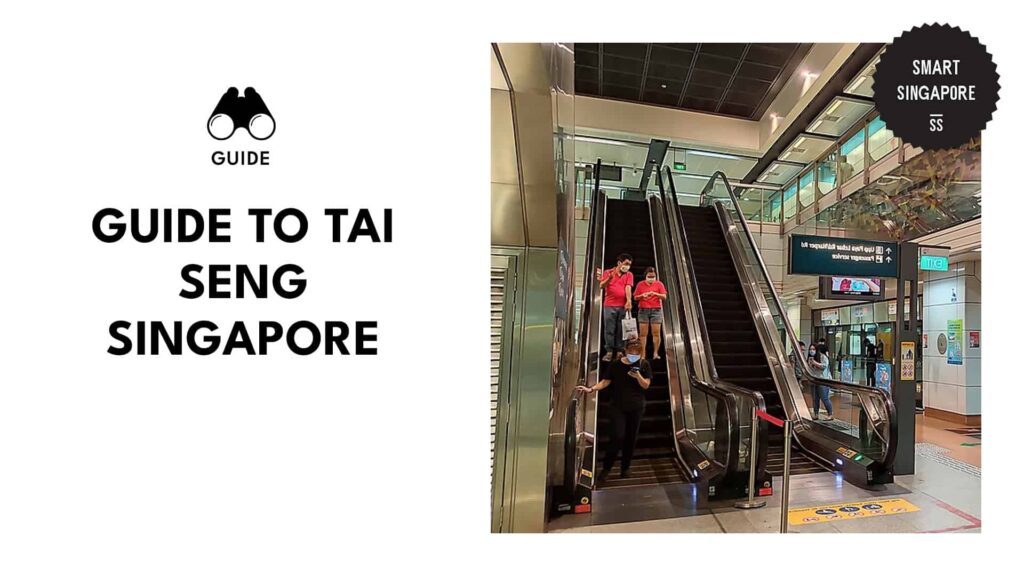Categories > Guides and Tips

Etiquette Guide: How to Show Respect in Singapore
- How do Singaporeans show respect?
- Inside This Guide to Singaporean Etiquette
- Get to Know the Singaporeans
- Guide to Common Etiquette in Singapore
- How to Greet People in Singapore
- How do Singaporeans greet each other?
- How do you address people in Singapore?
- Naming Convention of Chinese Singaporeans
- Naming Convention of Malay Singaporeans
- Naming Convention of Indian Singaporeans
- What to Do When You’re Invited to a Singaporean Home
- What are some gift-giving etiquettes in Singapore?
- What are the dos and don’ts when dining in a Singaporean home?
- How to Use Chopsticks in Singaporean Homes
- How to Use Hands for Eating in Singaporean Homes
- What should I bring when I get invited to dinner in Singapore?
- How to Respectfully Communicate in Singapore
- How do Singaporeans communicate?
- What are non-verbal communication cues in Singapore?
- What is considered disrespectful in Singapore?
- Basic Business Etiquette in Singapore
- What is Singapore’s business culture?
- Other Social Norms in Singapore You Should Know
- What are the dos and don’ts in Singapore?
- Singapore Social Norms: Dos
- Singapore Social Norms: Don’ts
- Common Singaporean Values You Should Know
- What are some Singaporean values?
Respecting people is a universal virtue, but the ways to show it may vary from place to place.
As a general rule, conducting yourself in a manner that the locals find socially acceptable is the highest form of respect you can give to your host country.
If you’re visiting Singapore, know that you’re going to a multicultural nation, and that means a long list of social norms to take note of!
Check out our guide to know how Singaporeans show respect to other people so you have a blueprint of how to behave yourself once you set foot into the Lion City.
How do Singaporeans show respect?
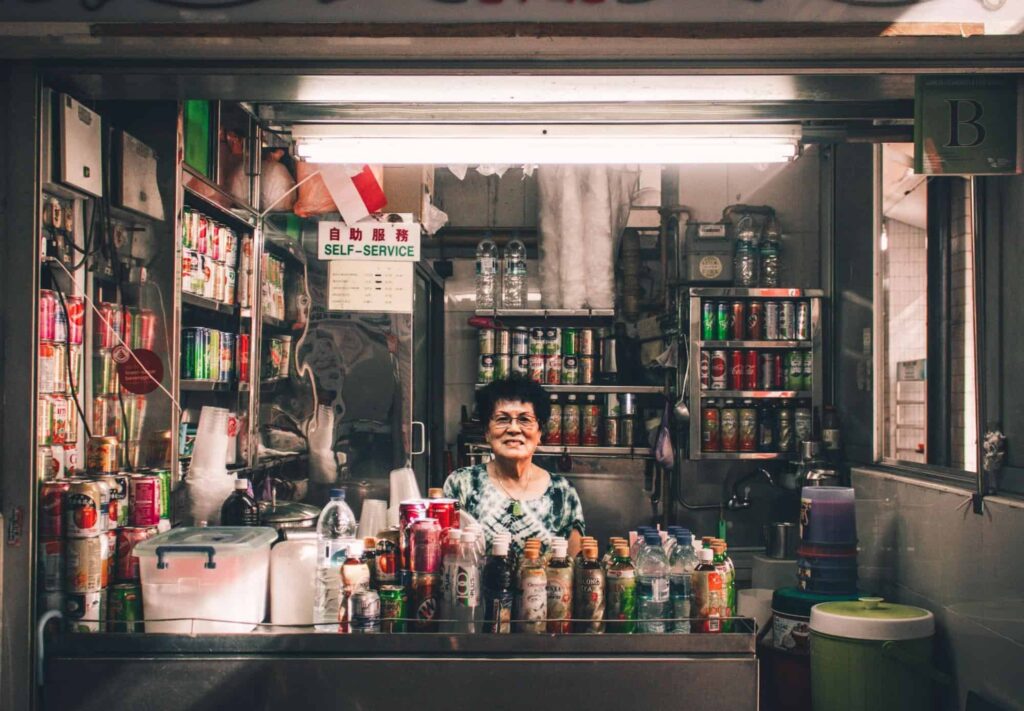
Singaporeans show respect in a myriad of ways, starting from how they greet people with a handshake to how they gently refuse without saying “no.”
The manner in which they show politeness and courtesy will slightly vary depending on the Singaporean’s ethnic roots.
One common value, though, is the Singaporeans’ high regard for their elderly, influenced by the cultural concept of filial piety. The elderly person in the room is commonly treated with deference and obedience above all others.
Aside from the practices mentioned above, a discussion about how Singaporeans show respect demands studying a lot of key points.
We’ll help you understand them by giving a background on the nation’s population makeup and providing a list of common etiquette.
We’ll also touch on other Singaporean social norms and values that you should be aware of. Hopefully, this will boost your confidence as you interact with the city’s people.
Inside This Guide to Singaporean Etiquette
Get to Know the Singaporeans
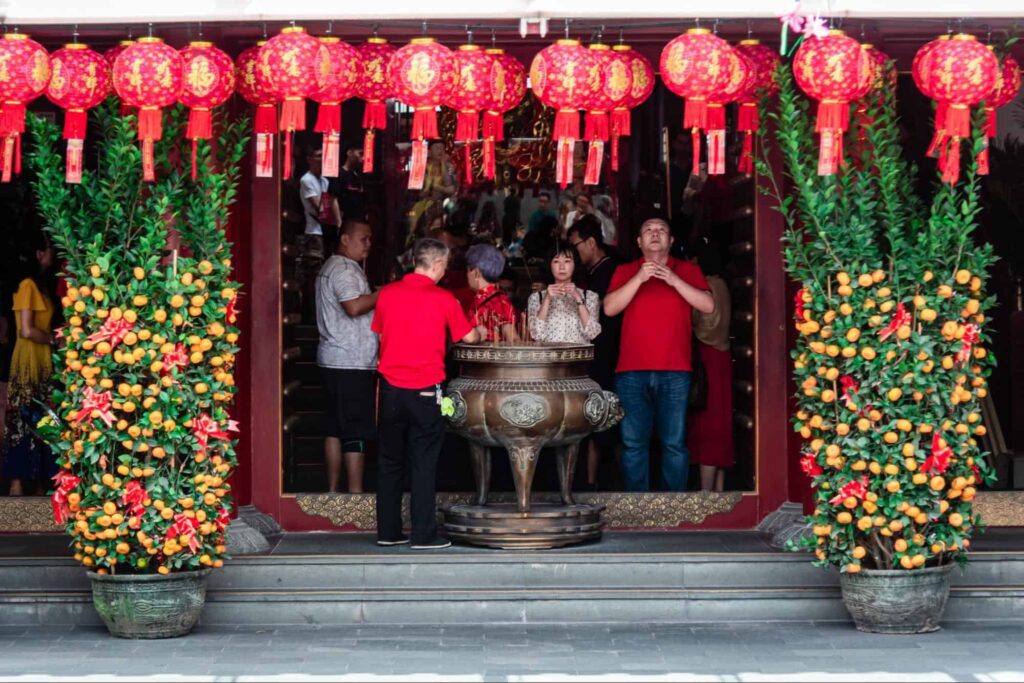
Singapore is known for being culturally diverse, with its citizens having Chinese, Malay, Indian, Eurasian, and Western roots.
That said, the three biggest ethnic groups whose cultures permeate Singapore society are the Chinese, Malays, and Indians.
Although the cosmopolitan lifestyle and English language are of British influences, much of how the Singaporeans show their respect can be traced to their major ethnic roots.
Guide to Common Etiquette in Singapore
You need not feel nervous when interacting with Singaporeans if you know what to do. Here are some etiquette tips to equip yourself with!
How to Greet People in Singapore
Meeting people for the first time in Singapore warrants a proper greeting. Thankfully, the practices here are not rocket science (though you might want to observe the nuances)!
How do Singaporeans greet each other?

Singaporeans greet each other by shaking hands and smiling. Also, expect people to say “Have you eaten yet?” or something similar, which has the same effect as the phrase “How are you doing?”
However, note that who you can shake hands with will vary across ethnic groups. For instance, Malay and Indian Singaporeans do not generally shake hands with the opposite gender.
If you can’t shake hands because you’re of the opposite sex to the person you’re greeting, a slight bow or nod and a smile will do.
Remember that handshake, especially with a Chinese Singaporean, is usually light and slightly prolonged.
How do you address people in Singapore?

You can address people in Singapore by saying their family name or full name along with an honorific. For those of Chinese ethnicity, honorifics can be Hsiensheng for Mr or Shih for Mrs/Ms.
Some basic knowledge of naming conventions across cultures is useful for determining what name to call someone.
Naming Convention of Chinese Singaporeans
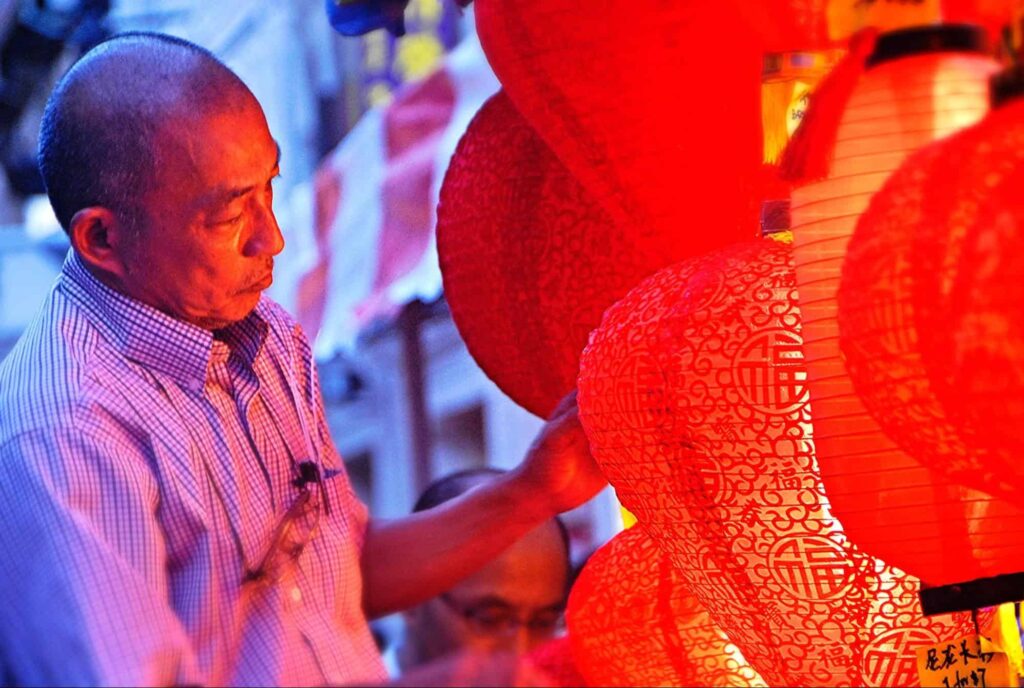
- Chinese names are arranged with the family name first and the given name second. An English name is usually added to the two basic Chinese names for business purposes.
- Chinese Singaporeans use a variety of names (e.g. social name, married name, business name, and English name) and will usually tell you which name they prefer to be called.
- A given name (or personal name) is usually reserved for use by the person’s family members, relatives, and partners only.
- You can use a person’s title alone to address them (e.g. Laoshi for Teacher).
- Relatives and close friends may address their kin by their social status (e.g. big brother and second sister).
- Members of the younger generation usually use their English names in introductions and references among their peers.
Naming Convention of Malay Singaporeans
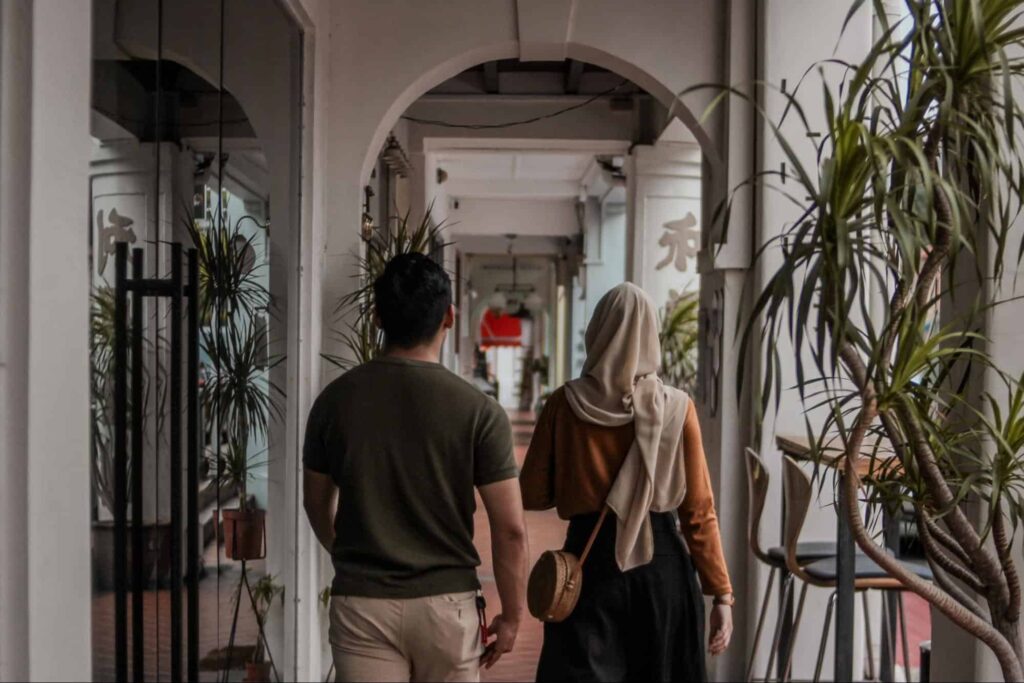
- Malay names are arranged with the given name first and the father’s given name second. Children assume their father’s name from birth.
- The patronymic noun bin (meaning “son of”) or binte (meaning “daughter of”) is put between the person’s given name and the father’s name.
- Married Malay Singaporean women don’t usually change their names.
Naming Convention of Indian Singaporeans
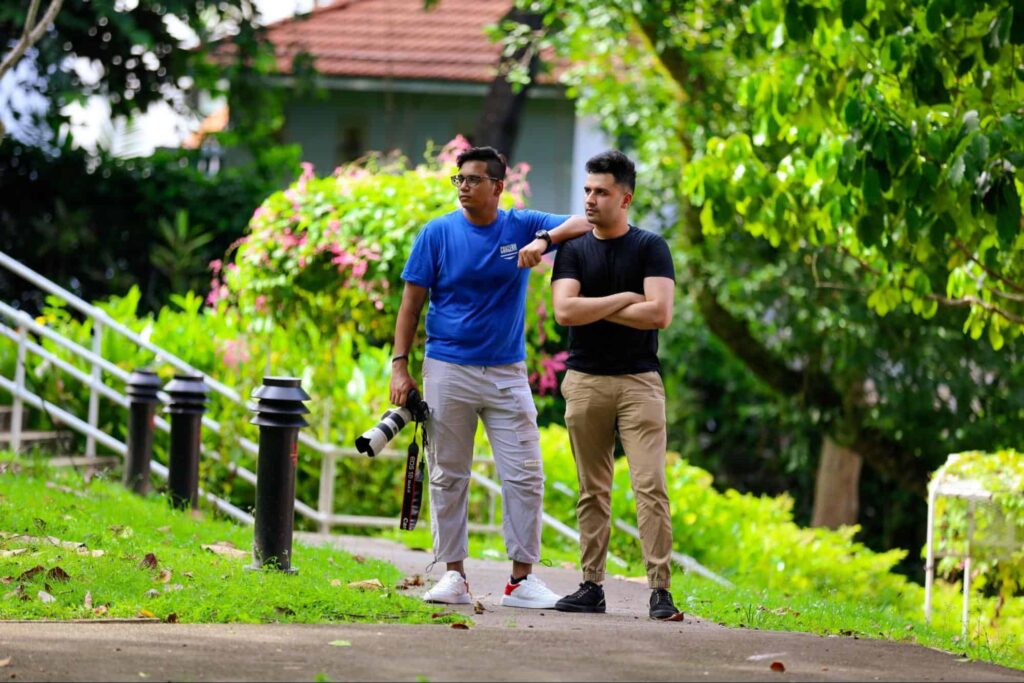
- Indian names are arranged with the given name first and the father’s given name second. Children assume their father’s name from birth.
- The patronymic phrase “son of” (s/o) or “daughter of” (d/o) is put between the person’s given name and the father’s name. Some Indian Singaporeans omit the phrase when they write their full names.
- Some Indian Singaporean women choose to use their husbands’ personal names at marriage, replacing their fathers’ names.
What to Do When You’re Invited to a Singaporean Home
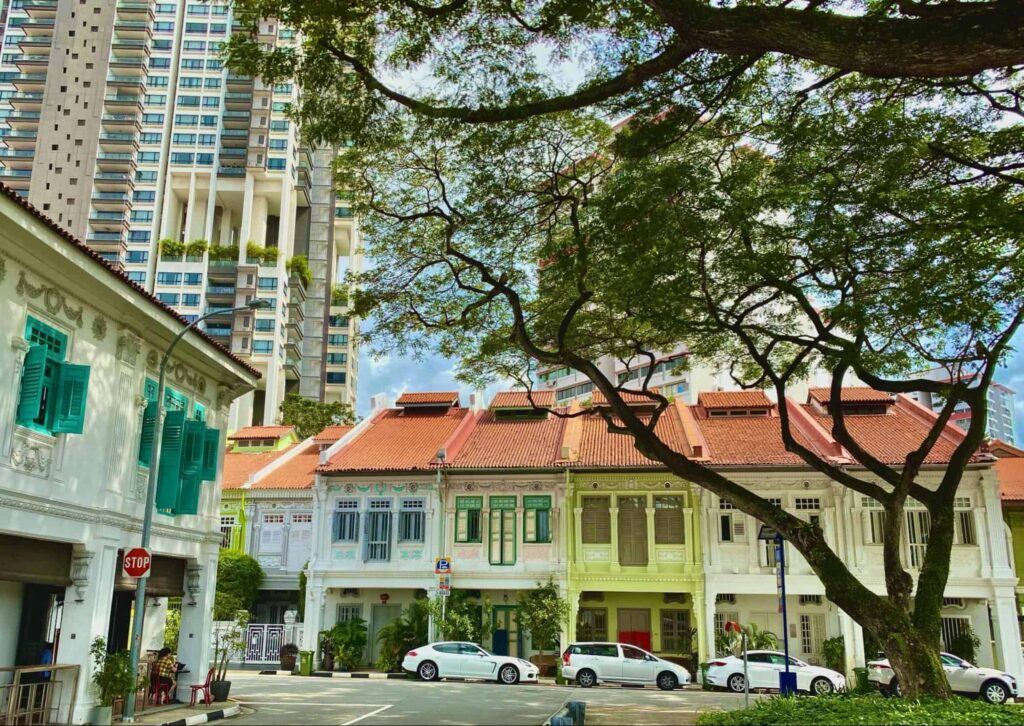
The first thing you should remember when you’re invited to a Singaporean home is that you are required to remove your footwear upon entry.
That said, it’s recommended to wear socks or tights so you won’t step in with bare feet.
This gesture is customary among Chinese, Malay, and Indian Singaporeans.
Here are other points to remember when visiting a Singaporean home:
- Dress modestly. You don’t want to offend your hosts by wearing inappropriate clothes!
- Do not touch on sensitive issues during a conversation.
Singapore thrives in harmony and forging connections with others, so topics that will ignite disagreements and unpleasantness, such as politics, religion, or other controversial themes, are avoided.
- Bring gifts. Hosts will appreciate you bringing gifts.
Just remember that Malay and Indian Singaporeans do not drink alcohol or smoke!
Chinese Singaporean hosts will be delighted if you bring gifts in even quantities (except 4, 14, or 24, which are considered unlucky).
What are some gift-giving etiquettes in Singapore?
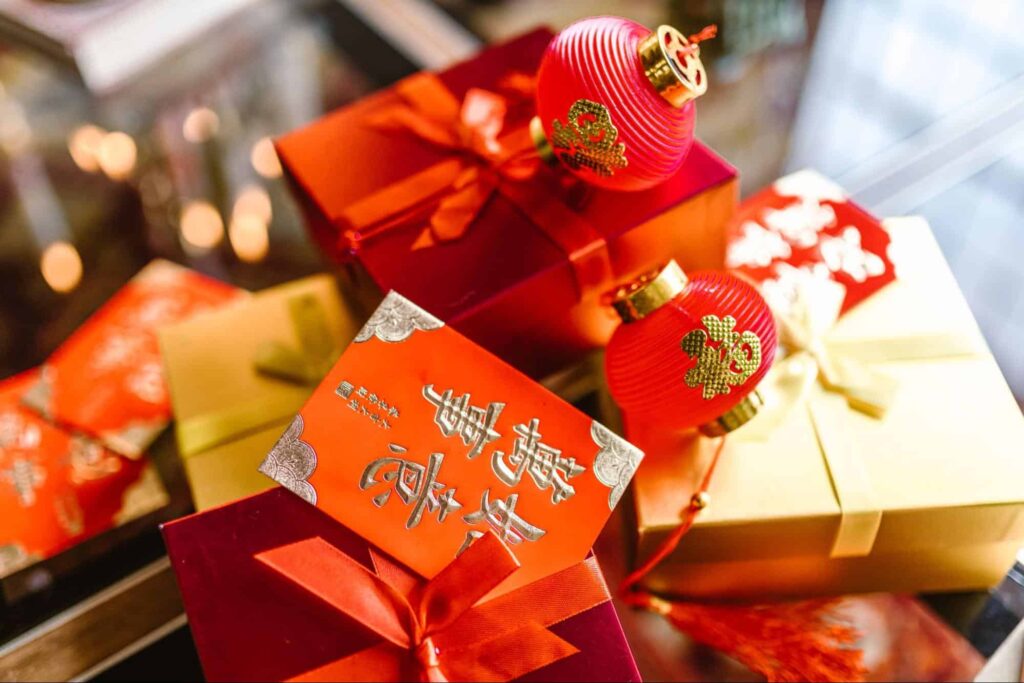
Your choice of gifts and how you give them will depend on who you’re visiting. Chinese, Malay, and Indian Singaporeans observe varying gift-giving etiquette.
When giving gifts to Chinese Singaporeans:
- Expect them to decline two or three times before accepting the gift (that’s how they show politeness).
- Wrap your gifts in elaborate wrappings of red and gold.
- Do not gift sharp objects, clocks, handkerchiefs, umbrellas, green hats, mirrors, and yellow or white flowers, as these items are taboo.
Meanwhile, you should remember the following when giving gifts to Malay Singaporeans:
- Do not wrap the gift in white, as the color is associated with death and mourning. Use red or green wrapping instead.
- Do not give alcohol or pork, and don’t give toy dogs to children.
- If you’re giving food, ensure the gift meets halal standards.
- Do not use your left hand when offering your gift. You can use your right hand or both hands.
- Give the gift upon departing.

Indian Singaporeans will appreciate it if you consider the following when giving them gifts:
- Wrap your gift in bright colors such as red, yellow, and green. Do not use black and white wrapping.
- Do not give leather products and alcohol.
- Similar to how one gives gifts to Malay Singaporeans, offer your gift only with your right hand or both hands.
- Do not give flowers used in funeral wreaths such as frangipani.
It’s customary for all three ethnic groups to not open your gift when they receive it, so don’t get offended when they thank you and then place your elaborately wrapped present in the corner. They will open it later once you take your leave!
What are the dos and don’ts when dining in a Singaporean home?
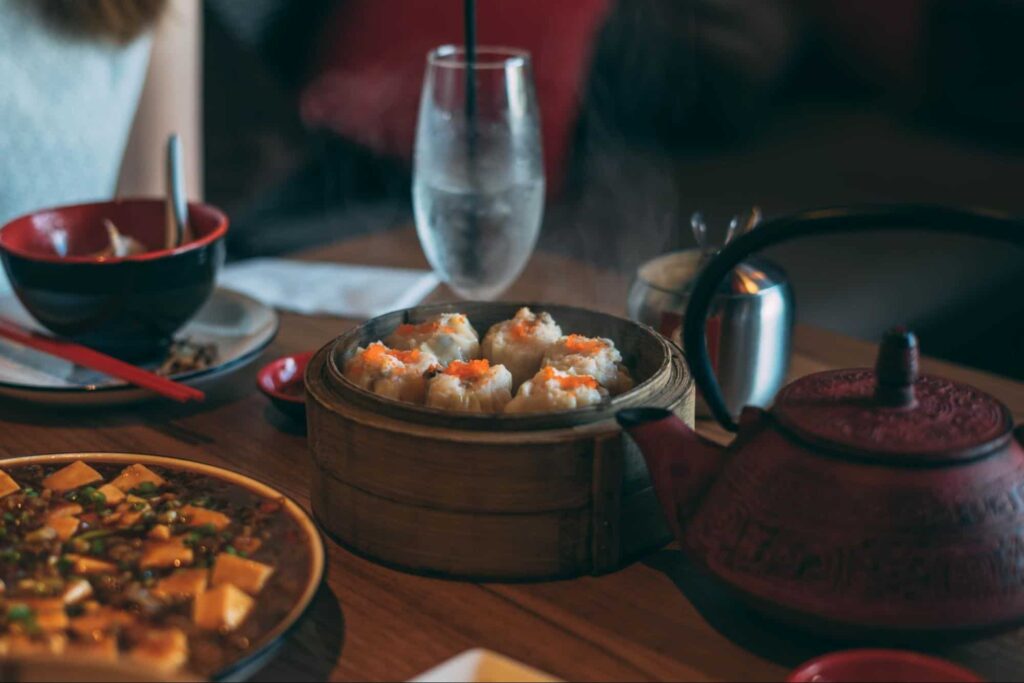
The dos and don’ts when dining in a Singaporean home will vary a little depending on your hosts’ ethnic roots. That said, these are the things commonly observed across households:
- Allow the host to select all the dishes for the meal. Bringing food to dinner as a guest might send the wrong impression.
- Do not start eating until the host invited you to do so or has started first.
- Compliment the host, the home decorations, and the meal, but do so sparingly and sincerely!
- Do not use your phone while at the dining table.
- You can request alternative cutlery if you don’t know how to use chopsticks (for Chinese households) or if you’re unsure how to use your hands (for Muslim homes).
It’s better to stick to your way of eating than fumble and embarrass yourself!
- Use the communal serving utensils when partaking in communal dishes. Also, don’t let it touch your plate and cutlery (for etiquette and hygienic reasons)!
- In a communal meal, do not reach out for the dish yourself. Ask your companions to pass it to you.
- Stick to light conversations over dinner. Do not touch on sensitive or controversial topics such as politics, religion, or your hosts’ personal lives.
- Leave a small amount of food on your plate to indicate that you are full and satisfied with the meal.
- You can burp but do so gently. Burping is a sign that you appreciate the food (just don’t overdo it).
- You can offer to help clean up after the meal or find another way to be useful.
How to Use Chopsticks in Singaporean Homes
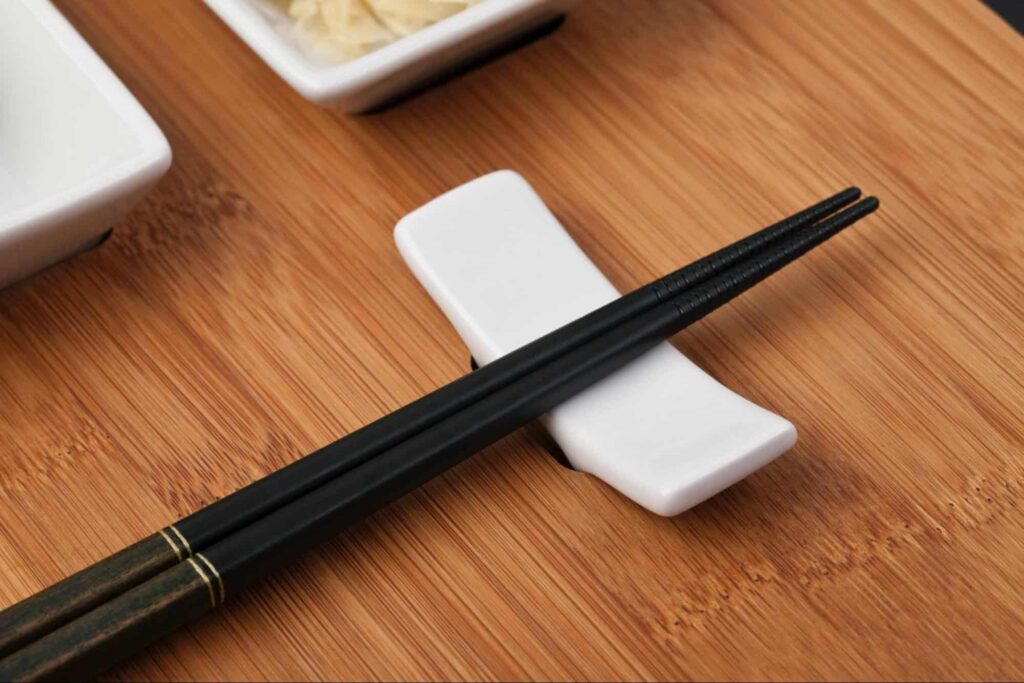
If you’re using chopsticks at a Singaporean home, remember to place them on your plate if you’re not yet finished eating and put them on the chopstick rest if you’re done.
An important reminder: never rest your chopsticks vertically (e.g. sticking them into your bowl of rice), as it might look like an offering to the deceased!
Also, avoid pointing the chopsticks at a person.
How to Use Hands for Eating in Singaporean Homes
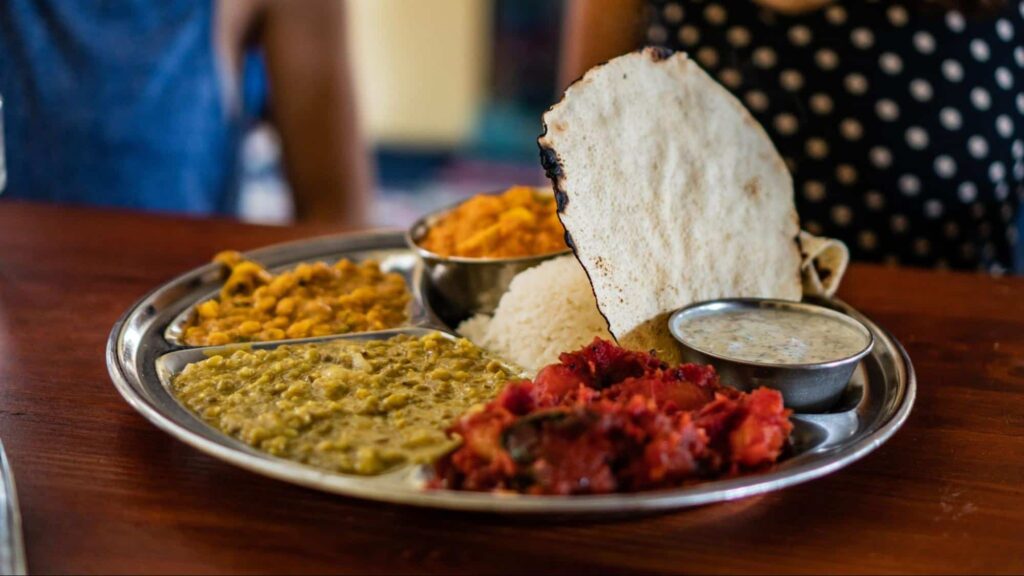
It’s perfectly fine to eat with only your hands in a Muslim household in Singapore. But remember to use your right hand, as the left hand is considered unclean.
As such, avoid using your left hand when passing food across the table too.
Whether you’re eating with or without cutlery, don’t forget to wash your hands before and after a meal.
What should I bring when I get invited to dinner in Singapore?

You can bring wine or champagne and a box of chocolates when you get invited to dine in a Singaporean home. The exception is when you’re visiting Muslims, who would appreciate the sweets but not the alcohol.
Alternatively, you can bring non-food items such as scented candles.
How to Respectfully Communicate in Singapore
Respectfully communicating in Singapore is done both verbally and non-verbally.
The country has a high-context culture, so you should be more attentive to the person’s non-verbal cues when they’re talking and be careful with your tone and gestures when interacting.
How do Singaporeans communicate?

Singaporeans’ communication style tends to be indirect or high-context. More than words, they rely on posture, tone of voice, and expression to convey their actual message.
This style is rooted in the country’s culture which gives importance to harmony and prevents both parties from “losing face” (with “face” being synonymous with reputation, influence, dignity, and honor).
For instance, many Singaporeans will seldom say “no” directly when they want to refuse or disagree, but they might show some hints of hesitation (which you should be able to pick up with practice and by being observant).
That said, they can be willing to say what’s on their mind in an honest but acceptable way if you encourage them to do so.
Singaporeans also tend to speak softly. Loud talking is considered rude in the country.
What are non-verbal communication cues in Singapore?
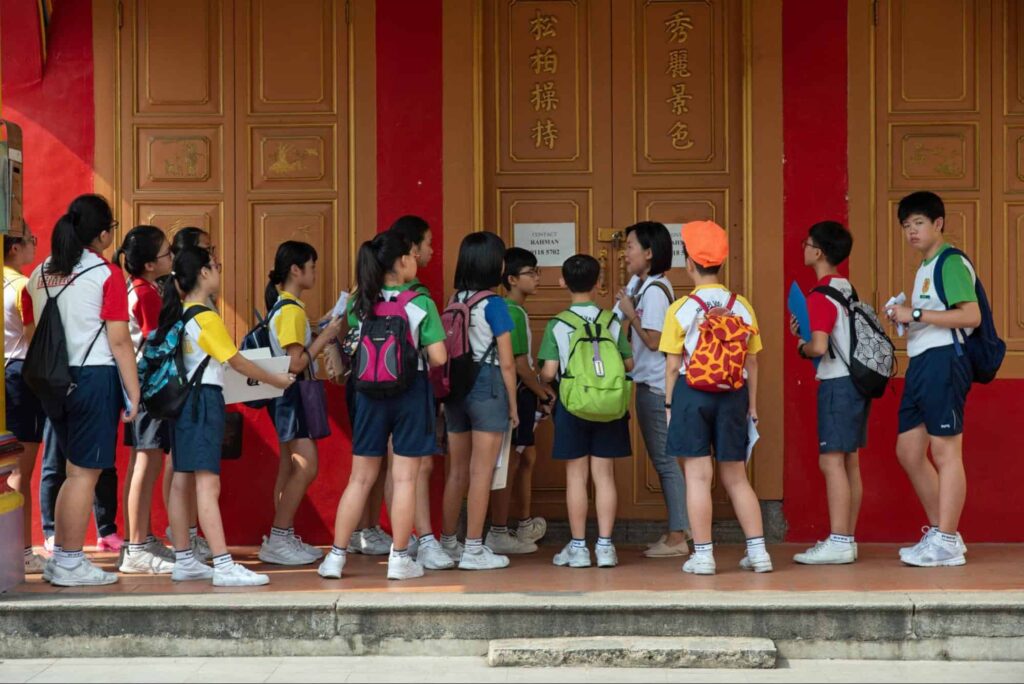
Here are some non-verbal cues to pay attention to when communicating with Singaporeans. You can also apply these to show your respect.
- A good posture while talking to someone indicates interest.
- Pausing for a while before speaking shows that you put some thought into your response, a sign of respect and politeness.
- Using both hands when handing a gift, money, or a business card is customary and polite.
- Averting one’s eyes from the person you’re talking to now and then is acceptable. Prolonged eye contact might come off as aggressive.
- Raising your hand to call someone’s attention is deemed respectful.
What is considered disrespectful in Singapore?
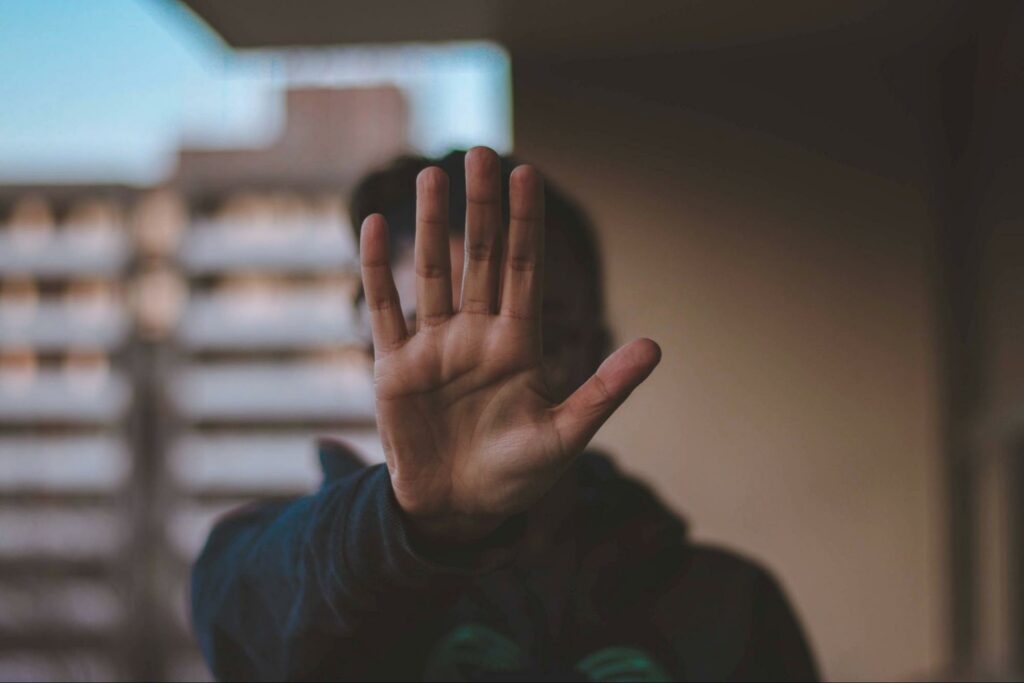
It is considered disrespectful in Singapore to fill in silences in a conversation. These pauses are for thinking about what to say next, not an invitation for you to butt in.
Singaporeans will also find it rude when you directly criticize them or give insincere compliments, as these can cause them to lose face.
And if you don’t want a Singaporean to think you’re losing face, avoid explosive displays of anger like raising your voice or shouting. Singaporeans are generally subdued and hold a high level of self-control, after all.
Apart from these communication etiquettes, there are still plenty of non-verbal cues or gestures that are seen as disrespectful in Singapore.
Here are some of the most common ones to keep in mind.
- Using the index finger to point at someone is rude.
- Using the foot to point at someone is taboo, as many in Singapore consider this body part unclean. Consequently, showing the soles of your feet is a no-no.
- You’re not allowed to touch anyone’s head, including children, as Singaporeans consider it sacred.
- Fidgeting with your legs or tapping your foot during a conversation may denote a lack of interest.
- Crossing your arms or putting your hands on your hips might show aggression.
- Pounding your fist on an open palm or jerking your forearm are obscene gestures.
- Avoid crossing your legs in front of an older person.
- Not pausing before speaking or talking too fast might indicate that you’re not putting careful thought into what you’re saying, which is deemed rude.
- Yawning openly, blowing your nose, or clearing your throat in public is not advisable.
Basic Business Etiquette in Singapore

Doing business with Singaporeans is a rich cultural experience. Do as the locals do by taking note of the following rules to show your respect in a corporate setting.
- Be punctual. Arrive on social occasions and meetings on time and call beforehand if you’re going to be delayed.
- Offer your business card with both hands.
Giving and receiving business cards is customary when you’re introduced. It’s a respectful gesture to offer yours and accept theirs with both hands.
- Handle business cards with care. After accepting the other party’s business card, regard it carefully before putting it on the table before you or in your card case.
Also, never put the card inside your back pocket or you’d come off as rude!
- Welcome small talks.
Allow some small talk before opening any business-related discussions. This is how Singaporeans build rapport with business partners.
- Be patient with negotiations.
Singaporeans are usually group-oriented, so don’t expect a decision there and then when talking to a business representative. It’s common to deal with correspondence a lot.
Be patient though. Singaporeans are known to be pleasant business partners, so they’re well worth the effort!
- Likewise, be patient with responses.
In a meeting, it’s usual for Singaporeans to pause for a few seconds before responding to a question. It shows they’re giving careful thought to it, so give them time!
- Make appointments two weeks in advance. Do this whenever possible, and do it in writing.
Alternatively, you can schedule appointments by telephone or e-mail (but apply the same formality as you would when writing a letter).
What is Singapore’s business culture?

Singapore’s business culture is described as group-oriented, which means many companies here focus on teamwork and collective accomplishments.
The needs of the group are prioritized over individual ones to reach positive results that will benefit all and not one.
But while there’s an emphasis on collaboration, the Singaporean work culture also places high importance on respect for authority. Those in power usually have the final say in group discussions.
Older people are also preferred for high-ranking positions in Singapore.
Other Social Norms in Singapore You Should Know
Some norms in Singapore are peculiar relative to how you live life on your home soil.
Avoid committing cultural mistakes left and right—or worse, be fined—by knowing what other things are socially acceptable in this island nation.
What are the dos and don’ts in Singapore?
Here is a glance at more things you should and should not do when you’re in the Lion City.
Singapore Social Norms: Dos
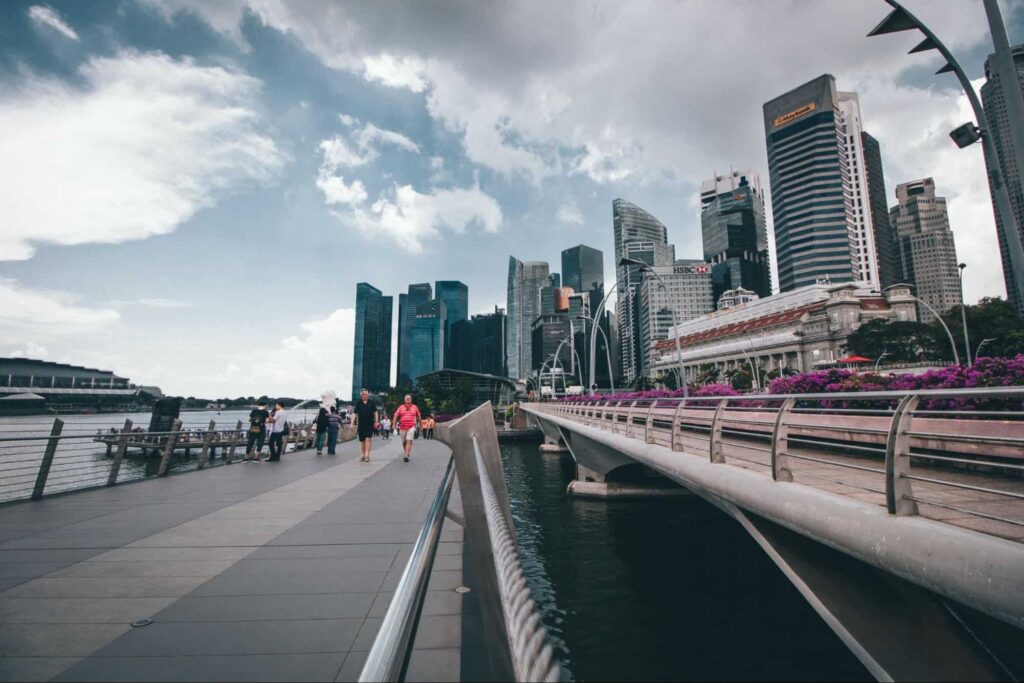
- Clean up after yourself when eating in public dining places.
- Compliment a person’s achievements rather than appearance.
- Be patient, calm, and polite, and ensure to show it through actions.
- Respect the long lines that usually form in stalls, restaurants, and stores. Queue up if you don’t want to miss out!
- Stay on the left side when using escalators (as you’d expect from a country that abides by left-hand traffic).
- Learn Singlish and use it to communicate.
- Remove your footwear when entering places of worship.
Singapore Social Norms: Don’ts
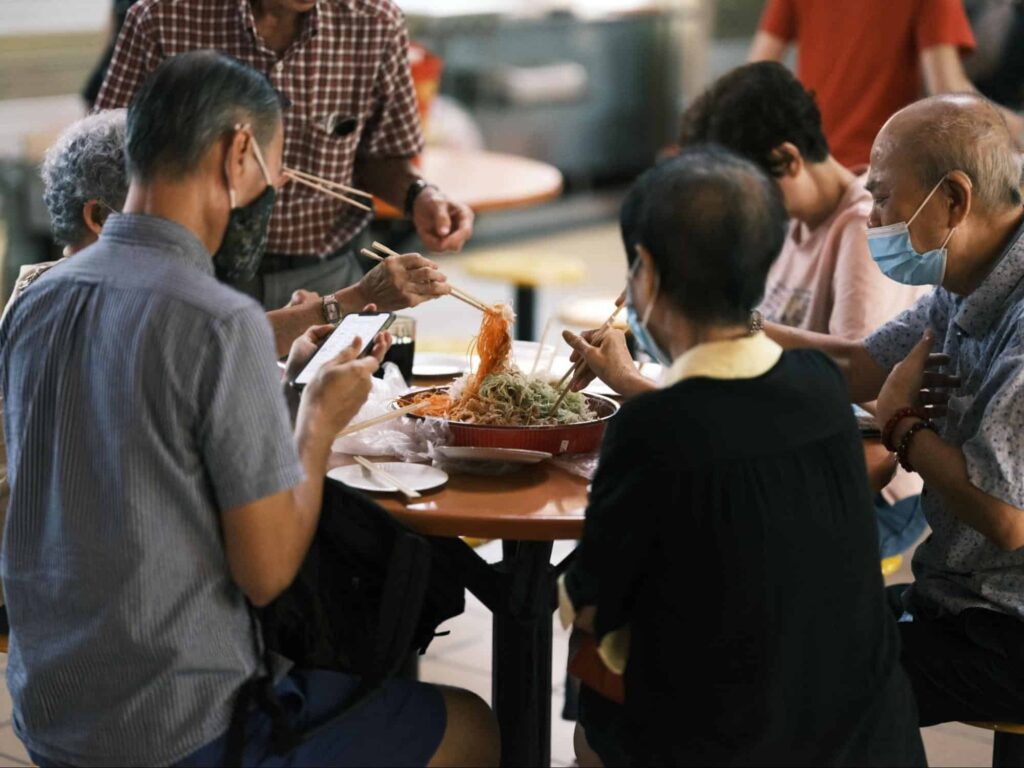
- Do not jaywalk, smoke, litter, or spit in public. If you’re entering the country, don’t attempt to import drugs or chewing gum.
All these acts constitute hefty fines!
- Don’t feed the pigeons. You might be fined, too!
- Avoid public displays of affection. Don’t go beyond holding hands as a couple!
- Do not take “choped” (or reserved) seats in public dining places. A seat is off-limits if it has a tissue packet or an umbrella on it.
Common Singaporean Values You Should Know
Singapore became the cohesive and well-developed country it is today thanks in part to the nation’s shared values.
You might just benefit a lot from knowing and adopting these values the way the Singaporeans did!
What are some Singaporean values?
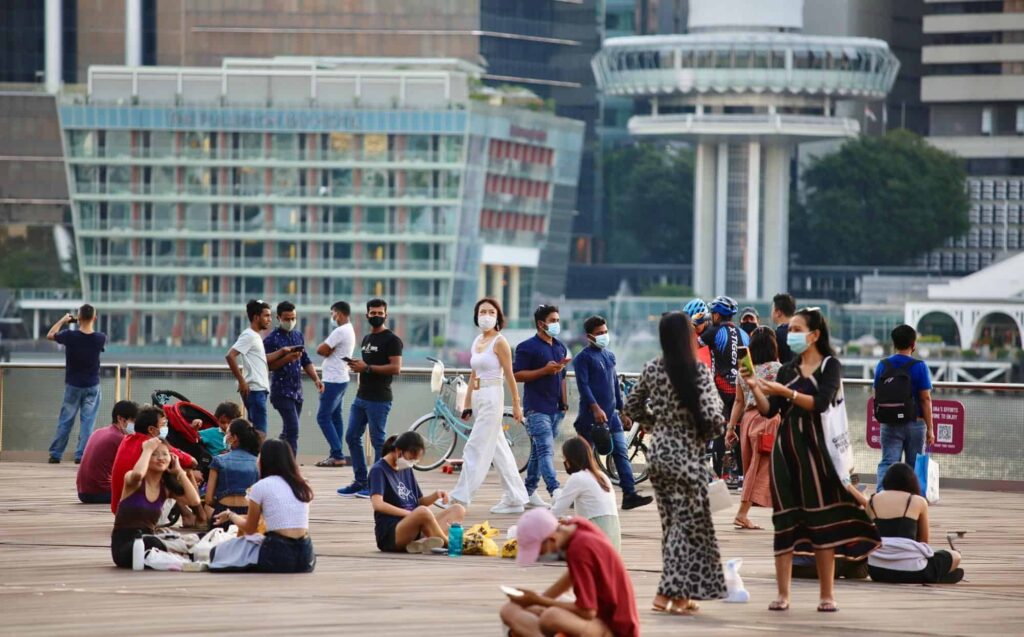
Common values in Singapore include collectivism, respect for authority, competitiveness, inclusivity, honesty, filial piety, and respect for people.
| Collectivism | Emphasis on group goals and personal relationships |
| Respect for authority | Those in power are given deference and are usually obeyed |
| Competitiveness | Also called “kiasu;” emphasis on competition, assertiveness, and achievement |
| Inclusivity | Cohesive mixing of multiple cultures |
| Honesty | Being transparent and far from being involved in corrupt activities |
| Filial piety | Respect and care for parents, the elderly, and ancestors |
| Respect for people | Taking care not to offend anyone and cause them to lose face |
As Singaporeans are sober, disciplined, and prioritize harmony, eccentricity may not be highly valued.
That said, the nation’s most important values are evolving along with the world. You might hear Singaporeans talking more about gender inclusivity and environmental consciousness, which matches the global call around these topics today.

